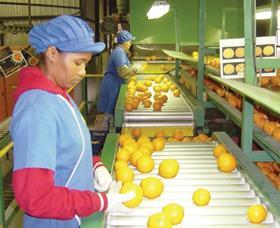
Leaders in the South African citrus sector have refused to comment on claims from Valencian produce association Ava-Asaja that Spanish production is under threat from dangerous plant diseases emanating from South African imports.
South African Citrus Growers’ Assocation spokesman Justin Chadwick said the South African industry had decided not to comment on the Spanish claims.
“There are a number of articles presently circulating in which these statements are made,” he told Fruitnet. “We are also calling for a revision of the measures but we are doing that through the relevant technical process, not via sensational media releases.”
Ava-Asaja last week urged the Spanish government and the European Union to tighten their import controls for citrus shipments from South Africa.
Although it said that the volume of citrus imports from South Africa to Spain had fallen by 56 per cent, the group claimed the threat from foreign pests and diseases had increased.
According to figures from Spain’s Ministry for the Environment, quoted by the group, consignments of citrus found to have problems in Spanish ports are said to have risen to a record level of 68 – one of the highest figures for the last decade.
However, industry sources that spoke to Fruitnet said they suspect there were political motives behind the statements in order to gain greater protectionism for Spanish products.
“It is well known that Spanish growers have had tough times recently and it is perhaps natural to expect this sort of thing,” said one industry insider.
Others warned that the debate around Black Spot (Gignardia citricarpa), one of the conditions which Spanish growers fear would threaten their industry, has been going on for some time and that it is something the South African industry should take very seriously.
Countries in which Citrus Black Spot (CBS) occurs include Argentina, Brazil, Peru, Venezuela, Uruguay, summer-rainfall regions of South Africa, Nigeria, Uganda, Kenya, Zimbabwe, Swaziland, Mozambique, India, China, Taiwan, Japan, the Philippines and coastal regions of Australia.
The disease is absent in Mediterranean regions subject to winter-rainfall, for example Israel, Italy, Spain, Greece, Cyprus, Chile, and California in the US.
“It is ironic that the winter rainfall region in South Africa which has a mild Mediterranean climate remains free of Black Spot despite the fact that it occurs in other parts of the country,” observed one commentator.
“Spain has a very similar climate to the Black Spot free regions in South Africa and it is doubtful that this will pose a threat to the Spanish industry,” he claimed.
The South African citrus industry, which first initiated a CBS pest risk assessment process with the EU in December 2000, announced additional measures to minimize the risk that Black Spot may pose European growers in March 2008.
“The aim of the process was to prove that CBS is no threat to the European citrus industry,” said Mr Chadwick.
“However, since the original submission there have been a number of technical information exchanges between the EU and South Africa, but little progress. The latest development is that the issue was referred to the European Food Safety Authority.”
Earlier this year a European Union delegation visited South Africa as part of the on-going discussions on the problem.






No comments yet